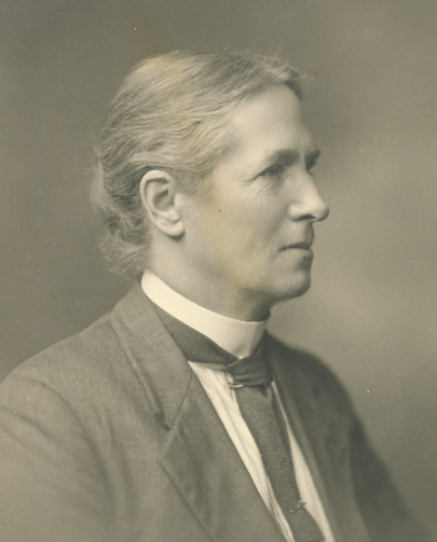
Edith Rebecca Saunders was a British geneticist and plant anatomist described as to ‘Mother of British Plant Genetics’ who made major contributions to the understanding of genetics and heredity at the beginning of the twentieth century. Becky Saunders studied at worked at Newnham College and was Director of Studies for the Natural Sciences at Newnham College between 1918 and 1925. Whilst still an undergraduate, Saunders began supporting the research of William Bateson, who was struggling to find acceptance for his ideas on heredity. He recognised Edith Saunders’ capacity for precision and hard work, and always acknowledged her contributions. Bateson and Saunders viewed speciation as dependent upon abrupt changes in form, which went against the neo-Darwinian principles of gradualistic evolution upheld by most scientists at the time. In 1897, Saunders published the results of series of breeding experiments in Biscutella laevigata demonstrating that crosses between hairy and smooth-leaved plants did not produce blended offspring. Further work by Bateson and Saunders again demonstrated a sharp discontinuity in forms, and prompted them to search for a theory explaining their findings. It was then (1900) that Bateson re-discovered Mendel’s work and from these beginnings grew the ‘school of genetics’ which made considerable advances in the understanding of heredity. In 1902, Bateson and Saunders published the first of four Reports to the Evolution Committee of the Royal Society, signifying the beginning of the era of Mendelism. Throughout her career at Cambridge (1888-1945), Saunders was a much-respected teacher. She was for a time the director of the Balfour Biological Laboratory for Women. This facility, one of the first in Britain tailored specifically to women’s formal laboratory instruction, was established to support women at Cambridge in preparation for the Natural Sciences Tripos. Although female students had been allowed to sit exams since 1881, the University itself offered them no practical training, and they were sometimes even barred from lectures. Unusually for a woman in science at the time, Saunders’ stature and contributions were to a degree acknowledged. She was one of the first women to be elected as a Fellow of the Linnean Society (1905), and received the Royal Horticulture Society Banksian Medal (1906). She was also President of the Genetical Society from 1936 to 1938, and often played an active role in the annual meetings held by the British Association for the Advancement of Science.
